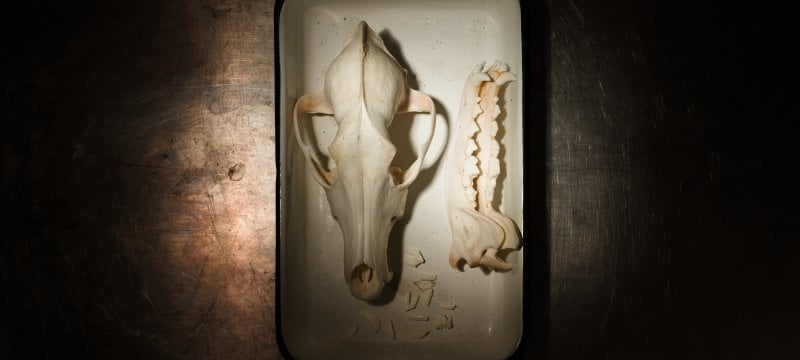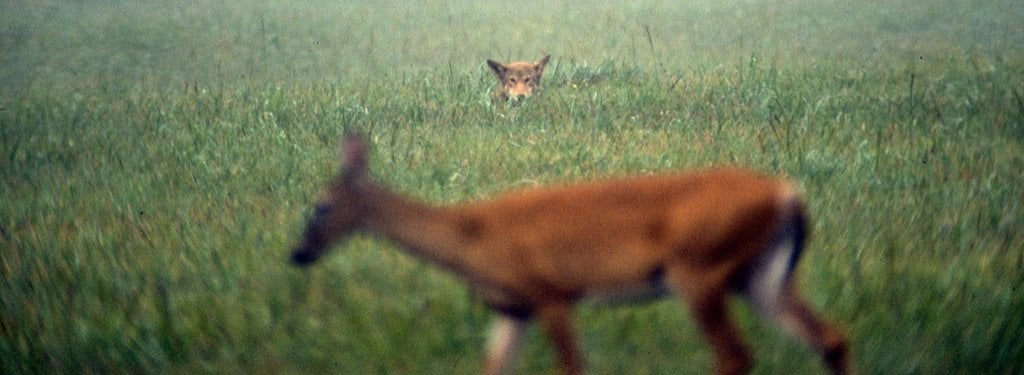Kristin Brzeski's quest to save endangered species led the conservation geneticist to the Gulf Coast of Texas and Louisiana, home to a unique population of "ghost wolves."
How do you save a species in decline? Better yet, how do you revive a species declared extinct in the wild more than four decades ago?
For most people—even for most wildlife biologists—the answer is simple: You don't. But for Kristin Brzeski, assistant professor of wildlife science and conservation at Michigan Tech, hope for the critically endangered red wolf is found in hybridization.
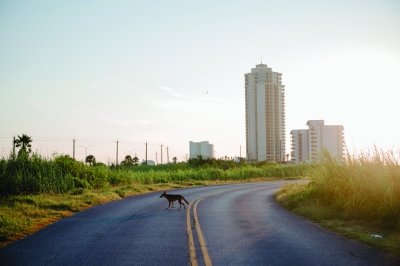
In the case of the red wolf, hybridization rests in a population of "fancy, unique coyotes," as Brzeski describes them, on Galveston Island, Texas. The coyotes' atypical characteristics—longer legs, longer snouts, and redder-than-normal fur—were first noticed by Galveston resident Ron Wooten in 2008, and caught the attention of Princeton evolutionary biologist Bridgett vonHoldt in 2016. Wooten sent tissue samples to her lab, where Brzeski was completing a postdoctoral fellowship. Since confirming the odd-looking coyote population as a wild reservoir of red wolf genes, these so-called ghost wolves of Galveston have fascinated Brzeski, and much of her research and teaching attention at Tech has been devoted to genetic admixture—mingling the genes of isolated populations through interbreeding—as a conservation strategy. In a world beset by climate change and habitat loss, she believes hybridization offers a winning strategy in the struggle to reverse a global biodiversity crisis.
"We're losing species faster than we know what to do, and it's hard for conservation groups and federal agencies to act quickly," says Brzeski. "So admixture might be a way to maintain and buffer unique species. I think these canids on the Gulf Coast are a poster child for what conservation might be in the future, and for what techniques we can develop and use to understand and mitigate population loss."
In 2020, Brzeski, vonHoldt, and Joey Hinton of the Wolf Conservation Center formed the Gulf Coast Canine Project, an organization devoted to the study of the admixed coyotes in southern Texas and Louisiana. With assistance from Michigan Tech graduate students Tanner Barnes and Lily Heinzel, Brzeski and her team employ a variety of methods to identify both individual animals and packs, looking at questions of red wolf ancestry and genetic relatedness through data collected about the canids' body shapes and sizes. Brzeski also assesses items in their diet—a process known as genetic metabarcoding—and works with MTU biologist Jill Olin to identify stable isotopes, which help determine the spot these animals occupy in the food web. Together, the researchers are trying to form a more holistic picture of the Gulf Coast canid—from an individual animal's niche trophic location to the ecology of the landscape that supports entire packs. That picture, when complete, is what Brzeski believes may be the key to keeping red wolves on the landscape.

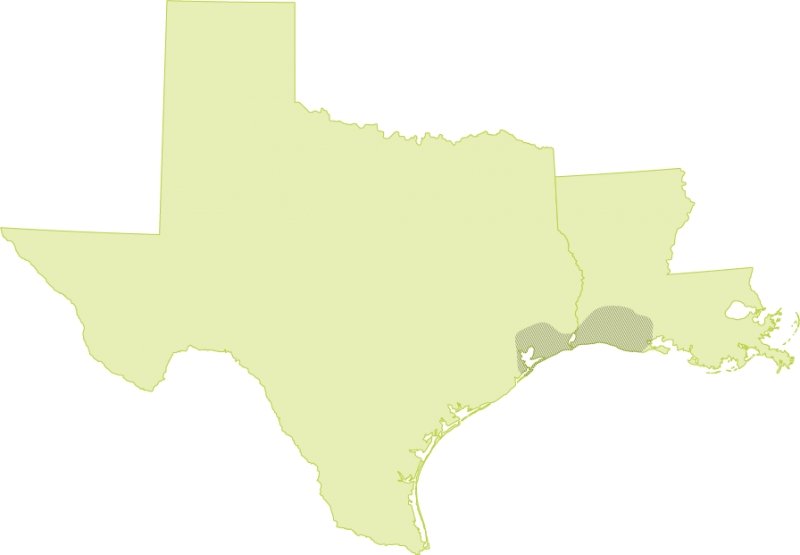
Current known range of admixed canids.
Brzeski explains that larger canids like red wolves eat differently than smaller canids like coyotes, because they have different energy budgets. "There's a tipping point around 40 to 50 pounds where the animal's energetic needs begin to require larger prey. That's when animals start forming big packs, when their hunting changes," Brzeski says. "With these admixed canids, we're right at that cusp. These animals can go either way. So understanding what these animals are eating can help us get a better understanding of the individuals and the population—knowledge that can inform conservation measures."
"People tend to think hybridization is bad, because we prefer things to be in their neat boxes," Brzeski explains. "This is important for policy, because that's how species are protected and maintained, but it's not really how evolution works. And the more we understand genomics and genomes, the more we understand the unique adaptive potential of admixture."
After her research team published a major paper in Science Advances in 2022, Brzeski trained her focus on using noninvasive methods to improve their work and expand its reach. A grant from the Michigan Tech Research Excellence Fund helped Brzeski begin building what she hopes will become "a really big database with an interactive website and interface," complete with real-time data imported by a network of researchers and citizen scientists. Photos of canids will be combined with information about diet, ancestry, ecological niche, genetic relatedness, and even mating patterns. Rather than trapping and tagging animals, or waiting to get a high-quality tissue sample from a road-killed specimen, Brzeski aims to track the canids primarily through scat samples collected by residents and others interested in the conservation effort.
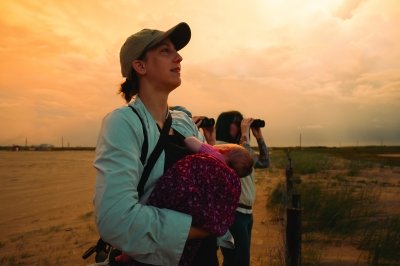
"Citizen science is great for engaging people, educating and changing minds," says Brzeski. "It's harder to make it work in terms of generating information that is useful in a scientific framework." That's what makes Brzeski's scat sampling method ingenious: It's something a person can do when they're out on a walk, and it's not dependent on their ability to count accurately, or to identify if an individual is a pup or an adult. "It's really just their ability to pick up a piece of poop," she says. "Then they go on the website, download a shipping label, and mail it to Michigan Tech—that's it."
Brzeski sees this citizen science network expanding as people plug themselves into the project. Ultimately, she hopes to see Galveston become for the ghost wolves what Yellowstone is for gray wolves—a premier ecotourism destination for those who want to see a unique, distinct type of canid, one that can't be found anywhere else. Given the region's status as a known stopover spot for migratory birds, sea turtles, and other uncommon wildlife, Brzeski has good reason to hope.
"You know, it's hard to be positive when working with the red wolf—it's just not doing well. It's hard to be positive about conservation in general. But this feels positive," she says. "There's conservation value in this for the red wolf, but there's also broader conservation value in what we learn about admixed individuals. The more we can understand this population and its ecology, and the individual and pack behavior, the more we can use that knowledge to inform broader ideas and approaches in biodiversity conservation."
"The more we understand admixture, the more we know its unique adaptive potential," says Brzeski. "Admixture just might be what is keeping these animals on the landscape."
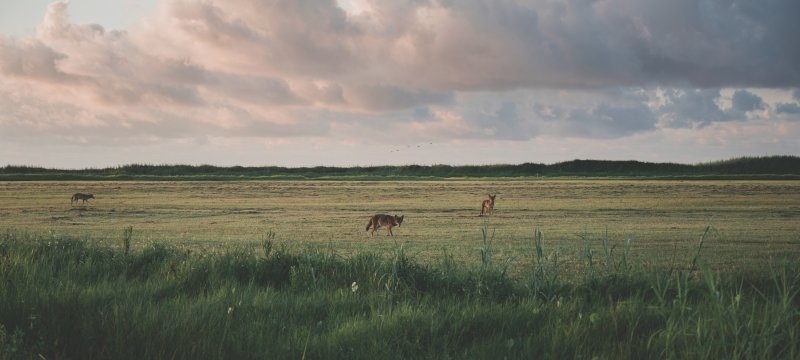
Michigan Technological University is an R1 public research university founded in 1885 in Houghton, and is home to nearly 7,500 students from more than 60 countries around the world. Consistently ranked among the best universities in the country for return on investment, Michigan's flagship technological university offers more than 120 undergraduate and graduate degree programs in science and technology, engineering, computing, forestry, business, health professions, humanities, mathematics, social sciences, and the arts. The rural campus is situated just miles from Lake Superior in Michigan's Upper Peninsula, offering year-round opportunities for outdoor adventure.
